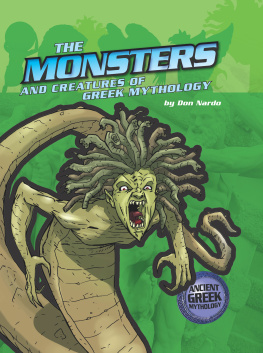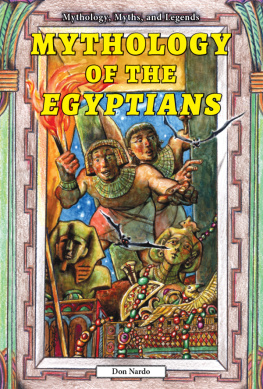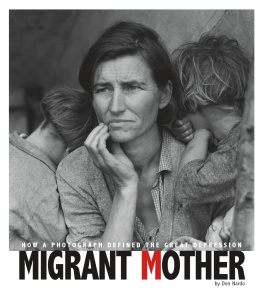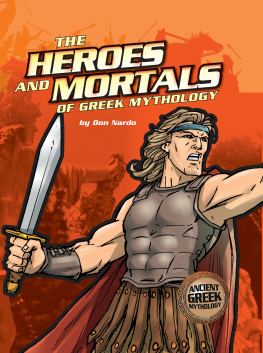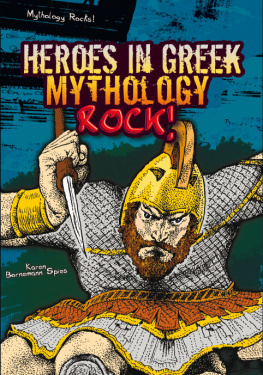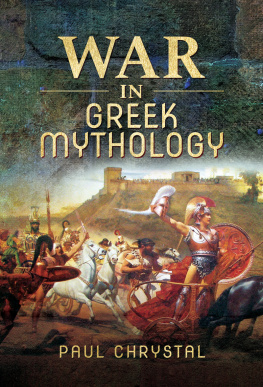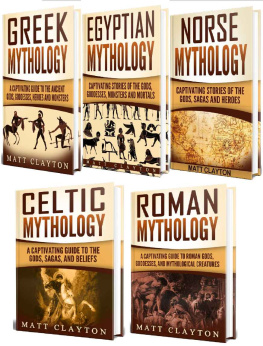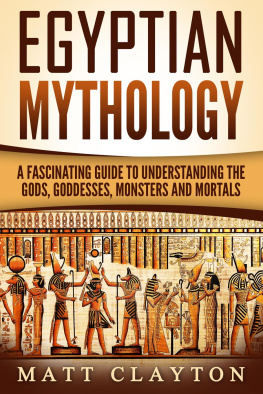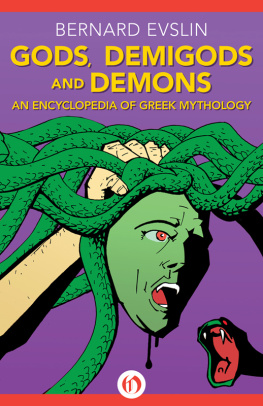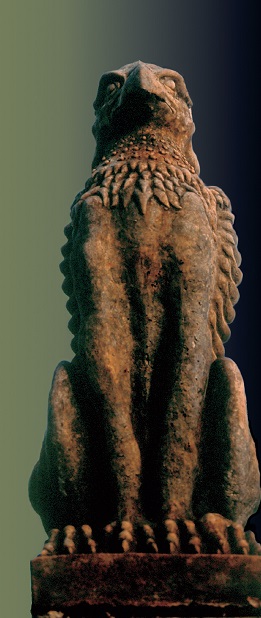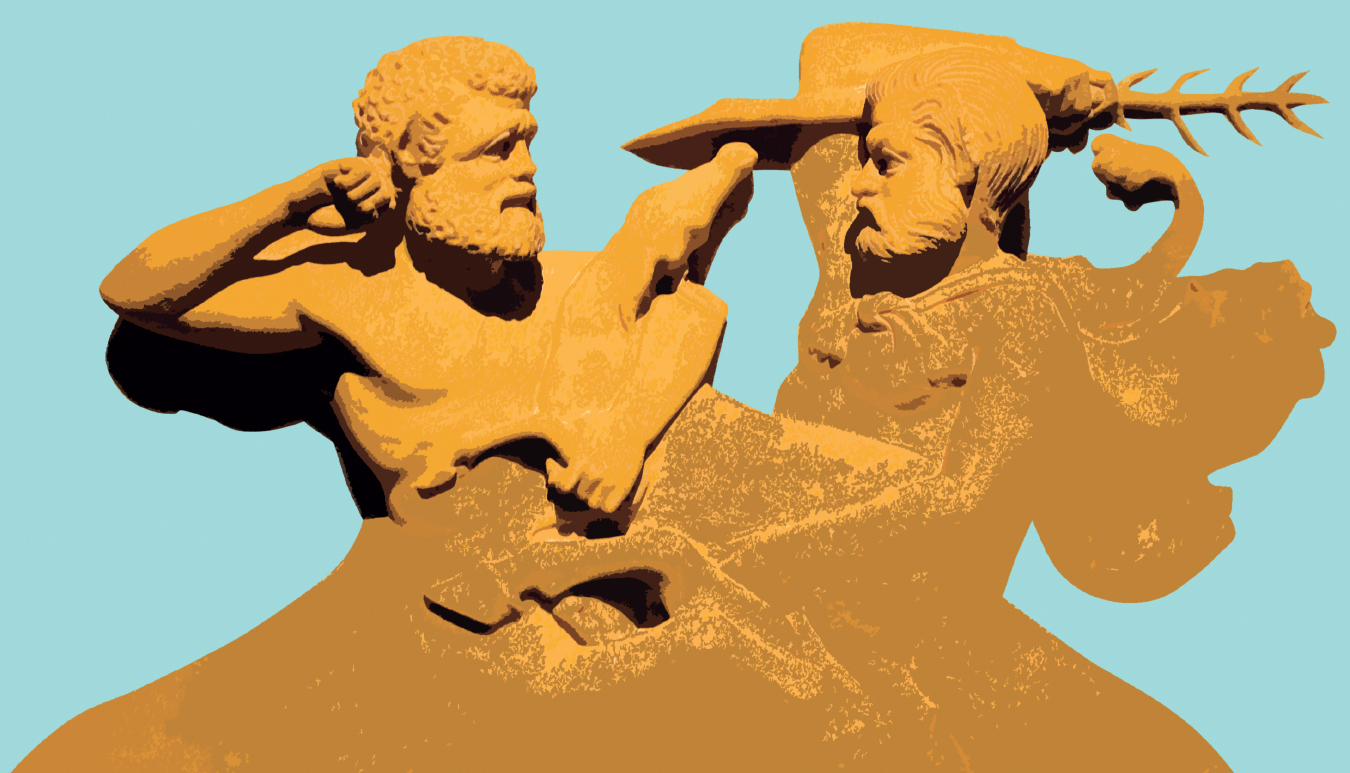Chapter 1
WHERE REALITY AND FANTASY DISSOLVE
Nearly every ancient human culture developed its own personalized . Eachmythology was a group of stories about gods, monsters, and human heroes. The heroesinteracted with the gods and fought and killed the monsters. The typical mythologyalso contained tales about giants and incredible creatures with multiple heads orarms.
The peoples who created these fantastic stories knew little or nothing about science.They were highly superstitious. Also, they were mostly ignorant of the structureof the universe and how nature works. So they manufactured their collections of mythsas a way of explaining the wonders of the universe and nature. Such stories toldwhere fire, lightning, and thunder came from, for instance. Myths also explainedhow animals and human beings were created. Usually these and other living thingswere said to have been fashioned by gods or other supernatural beings or forces.Myths also described what happened after people died. These stories commonly includeddepictions of the Underworld or other realms of the dead.
Strange and Dangerous Creatures
Like other ancient mythologies, that of the Greeks had its creation stories and talesabout the Underworld. It also featured all sorts of strange, colorful, and dangerouscreatures. Some were half-human and half-animal, such as the were usually not a threat to people, though they could be mischievousor pesky.
The powerful Griffin was a hybrid of the lion, considered to be the king of the beasts,and the eagle, the king of the birds.
The early Greeks also told tales of wondrous, awesome creatures. Among them werehorses and lions with wings, a goat whose horns were filled with fruit, and a giganticserpent that a goddess ordered to guard an important temple. Such beings rarely poseda hazard to humans. Some of them even helped people to overcome evil or various obstacles.The famous flying horse, Pegasus, for instance, carried the valiant hero Bellerophonwhen he slew a hideous monster called the Chimaera.
Monsters Meet Their Match
The Chimaera was far from alone. In addition to some mostly harmless creatures, Greekmythology was full of repulsive, terrifying monsters. Some had several heads, whileothers had snakes for hair. Still others were giants who towered over humans. Nearlyall of the monsters had a taste for human flesh or blood. In most cases these monstersdied at the hands of fearless human heroes.
Nearly every Greek myth featuring a dreadful monster also contains a muscular, agilehero. As a renowned expert on Greek mythology, Edith Hamilton, put it:
The mythical monster is present in any number of shapes, but [such creatures] arethere only to give the hero his reward of glory. What could a hero do in a worldwithout them? They are always overcome by him.
Endlessly Entertaining
The playwright Euripides wrote many great plays, including Cyclops.
The monsters and strange and wondrous creatures populating the Greek myths did morethan explain the workings of nature and supply opponents for heroic humans. Thesefabulous beings also provided the . Today historians call it Greeces late Bronze Age, lastingfrom about 1500 BC to 1150 BC.
The importance of ancient myths in diverting and amusing the ancient Greeks cannotbe overstated. They told and retold the tales about Pegasus, the Chimaera, and othermythical creatures. Children heard these tales and acted them out for fun. Storytellerscalled bards recited the myths before crowds on street corners. Many of the samestories were transformed into theatrical plays by talented writers such as the AtheniansSophocles and Euripides.
The fun factor of the Greek myths survived the end of classical Greece and of ancienttimes as well. Greek mythology became popular again in late times. Thenearly modern storytellers, including English playwright William Shakespeare, passedthe myths along to later generations. Even today, in an age in which science andknowledge have mostly replaced ignorance and superstition, the creatures of Greekmythology remain quaint and compelling. The half-human hybrids, wondrous winged creatures,giants, and snake-haired monsters are still widely popular. In fact, they regularlyentertain far more people today than they did in ancient times. A modern historianpoints out:
One of the fundamental reasons for the creation and perpetuation of [these] myths[is that] we read them with pleasure. [They] have given us some of our most belovedsagas. Above all, [we remember them for leading] us into that realm of which [theGreeks] will forever be the masters, where reality and fantasy dissolve, and cometogether again as [the] immortal poetry [of myths].
Chapter 2
HALF-HUMANS AND OTHER ODD CREATURES
According to the ancient Greek storytellers, in the Age of Heroes there existeda race of beings called . It featured fourlegs, ending in hooves, and a bushy tail.
Apollos Offspring
A story from that era said that these odd-looking creatures had been spawned by ahuman named Centaurus. His father was the god Apollo. One of the most versatile ofthe Greek deities, Apollo oversaw named Stilbe.She lived near Mount Pelion, in Thessaly. That region, in central Greece, was knownfor its many fine horses. Soon after her union with the handsome Apollo, Stilbe gavebirth to Centaurus.
An alternative myth said that Centaurus was the son of a man named Ixion and a cloudthat a god had disguised to look like a woman. Whoever Centaurus parents were, asa young man he mated with several Thessalian mares. They then gave birth to the centaurs.
As it turned out, these horse-men did not reflect very well on their father or grandparents.A majority of the centaurs were vulgar, messy, and foul-mouthed. They spent muchof their time partying, drinking, and telling one another jokes and racy stories.
Though crude, the centaurs were normally no threat to their human neighbors. In fact,the two races often got along quite well. One exception was when the horse-men gotdrunk, at which time they could get both unruly and quarrelsome.
Centaurs and Drink
A tribe of Greeks known as the Lapiths saw the drunken centaurs in action. The Lapithsdwelled in a part of Thessaly not far from the caves and groves where the centaursmade their own homes. The king of the Lapiths, Pirithous, was a warm, hospitableman. So when he was planning his wedding feast, he thought it would be a neighborlygesture to invite the centaurs.
Centaurs were well known for their short tempers and rowdy behavior, especially whendrunk.
Most of the horse-men gladly accepted the invitation. At first the festivities werepleasant and cordial. But after a while the centaurs did what they did best. Theypartied hard and got drunk. Suddenly they started saying that they owned the Lapithsland. Not only that, the centaurs owned the people who lived on that land. Althoughthese claims were false, at that moment the tipsy horse-men believed them. So theytried to grab and run off with the Lapith women. One centaur, Eurytion, went so faras to seize Pirithous bride, Hippodamia.

